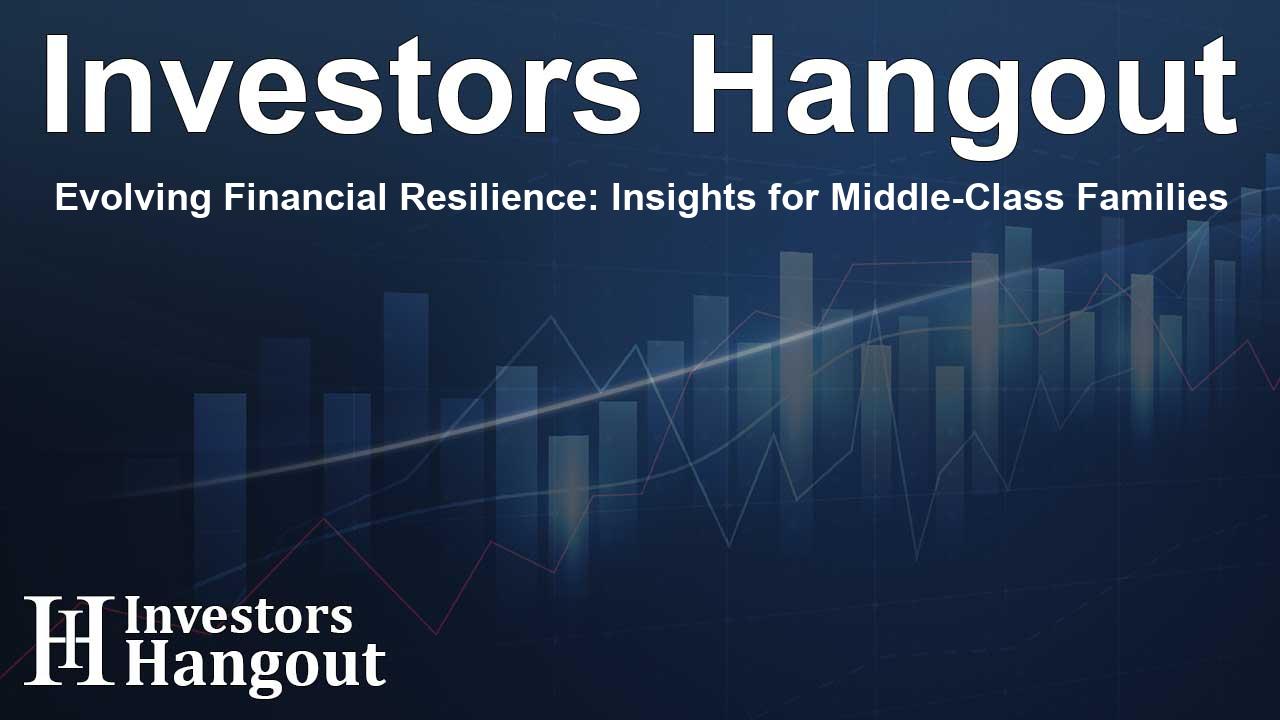Evolving Financial Resilience: Insights for Middle-Class Families

Understanding the Financial Resilience Index
The landscape of financial resilience for American middle-class households is a complex narrative shaped by various economic factors. Recently, the American Council of Life Insurers (ACLI) unveiled a Financial Resilience Index aimed at evaluating the financial standing of these households. This index presents crucial insights similar to a snapshot of financial stability in the face of increasing challenges.
Recent Trends and Observations
The latest index indicates a notable rise in the resilience score, which climbed to 31.8 in Q3 2024, a significant increase from previous quarters. This upward shift signals not only a recovery but a momentum in the financial capabilities of the middle class, spurred by improvements in income and the performance of the stock market. Reflecting on these dynamics, the index sheds light on how families are navigating the dual pressures of cost and income.
The Impact of Inflation and Cost of Living
Despite the easing of inflation from its peak, the American middle class continues to grapple with rising costs, especially in areas such as housing and childcare. Inflation trends and wage growth directly affect the financial strategies households adopt. Even though inflation pressures are abating, full recovery for many remains a goal as families work to stabilize their finances.
Wealth Generation through Stock Market Performance
The last year has been characterized by significant stock market performance, contributing to an enhanced sense of financial security among middle-class families. Increased retirement and non-retirement wealth have become vital buffers, enabling households to manage present and future financial demands more effectively.
The Survey Behind the Index
Complementing the index, a nationally representative survey conducted by The Harris Poll provides essential insights into middle-class sentiments regarding financial resilience. The survey reveals that while 52% of households feel confident in their ability to handle unexpected costs, there exists a prevalent disparity in financial readiness. For instance, a substantial segment of the population lacks adequate savings to weather economic shocks.
Disparities in Financial Preparedness
Observations from the survey reveal a stark contrast in financial confidence among demographics. Urban middle-class families exhibit better savings patterns compared to their rural counterparts. Additionally, families with children face more significant challenges in maintaining financial stability. This presents a complex picture of resilience, highlighting the importance of understanding how different groups are affected.
Age and Business Ownership as Determinants of Resilience
Interestingly, middle-class seniors and small business owners appear to showcase stronger financial resilience. A substantial portion of seniors express high confidence in overcoming unexpected expenses, showcasing how resource accumulation becomes pivotal in financial health. Such insights emphasize the diverse experiences within the middle class, underlining the necessity for targeted financial strategies.
Looking Ahead: Financial Growth and Its Implications
As inflation remains a pressing concern, the ACLI underscores the importance of resource growth in fostering financial resilience. With an economy in flux, the trends showcased highlight a pivotal moment where income and asset growth can substantially alleviate the financial burdens faced by households. As stakeholders, it becomes imperative to consider how these shifts can shape policies and support frameworks for middle-class families.
About ACLI and Its Initiatives
The American Council of Life Insurers represents a significant segment of the financial services sector, advocating for the interests of the life insurance industry. By consistently evaluating and reporting on resilience metrics, ACLI plays an essential role in informing policies that affect over 90 million American families reliant on financial safeguards provided by life insurance products.
Frequently Asked Questions
What is the Financial Resilience Index?
The Financial Resilience Index measures the capacity of middle-class households to manage financial challenges and plan for future stability.
How often is the Financial Resilience Index updated?
The index is updated quarterly to reflect ongoing changes in middle-class financial conditions.
What factors does the index consider?
The index considers income, expenses, credit access, and retirement resources, among other economic factors affecting financial resilience.
Who conducts the survey accompanying the index?
The Harris Poll conducts the nationally representative survey to gather insights into middle-class households' financial perceptions and conditions.
What demographic factors influence financial resilience?
Demographic factors such as age, urban versus rural residence, and family composition significantly impact financial preparedness and confidence among middle-class households.
About Investors Hangout
Investors Hangout is a leading online stock forum for financial discussion and learning, offering a wide range of free tools and resources. It draws in traders of all levels, who exchange market knowledge, investigate trading tactics, and keep an eye on industry developments in real time. Featuring financial articles, stock message boards, quotes, charts, company profiles, and live news updates. Through cooperative learning and a wealth of informational resources, it helps users from novices creating their first portfolios to experts honing their techniques. Join Investors Hangout today: https://investorshangout.com/
Disclaimer: The content of this article is solely for general informational purposes only; it does not represent legal, financial, or investment advice. Investors Hangout does not offer financial advice; the author is not a licensed financial advisor. Consult a qualified advisor before making any financial or investment decisions based on this article. The author's interpretation of publicly available data presented here; as a result, they should not be taken as advice to purchase, sell, or hold any securities mentioned or any other investments. If any of the material offered here is inaccurate, please contact us for corrections.